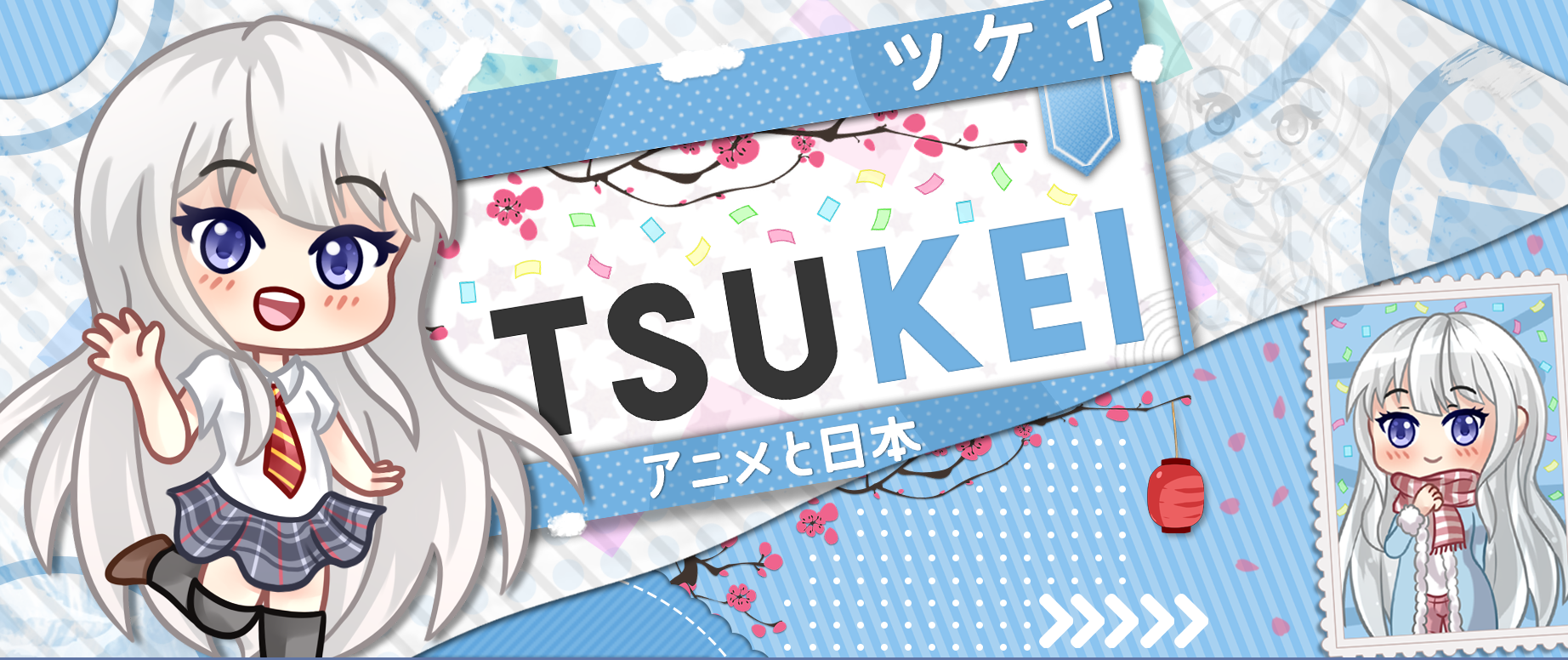Guest writer: Urusai_Uni#0007
Many of us know about wafuku aka kimono (and if you don’t, go take a look at the lovely article Meep wrote for us!), but what about the alternative fashions that have been popular in Japan for decades? Many of us have seen these “street fashions” either at a con or in public spaces. In this article, we’ll take a look at the history of Harajuku street fashion and some of the most popular styles!
The Basic History
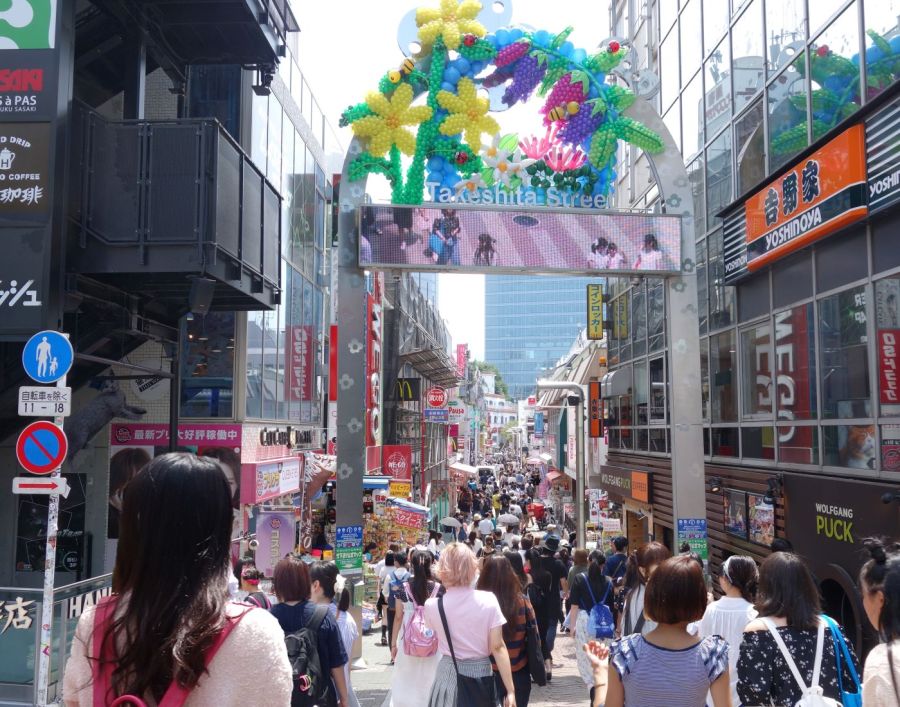
So what is “Harajuku Street Fashion”? It’s a broad label given to any alternative fashion (like punk or goth) that comes out of a district in Tokyo called Harajuku. Harajuku, Japan’s fashion capital, is the birthplace of most alternative fashions in Japan and is where you’re most likely going to see people showing off a variety of styles or shopping for the next one.
While all of these fashion styles have different histories, one common theme between all of them is “freedom of expression”. Each style is, in it’s own way, a rebellion against mainstream ideas and culture. Alternative fashion, in Japan and outside of it, is a fun and creative outlet for people of all ages while also making a statement, which varies from person to person.
The Styles
For this article, I’ll be going over four different styles and some of their sub-styles (different ways of wearing that type of fashion), but don’t think that’s all there is! Japan is constantly growing and changing and with it, so is its fashion styles!
Visual Kei
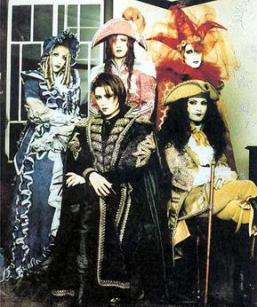
Showing up around the 80s, it was popular among Japanese musicians. A bit like punk in that it’s a music movement as well as a fashion one, visual kei performers wore makeup, flamboyant costumes and had elaborate, often colored hair styles. It is also more often seen among musicians than it is on the streets, unlike the other three styles I’ve picked. Visual kei popularity declined in the 2000s along with the bands that wore it, but is still around, especially as former bands do reunion tours.
Lolita
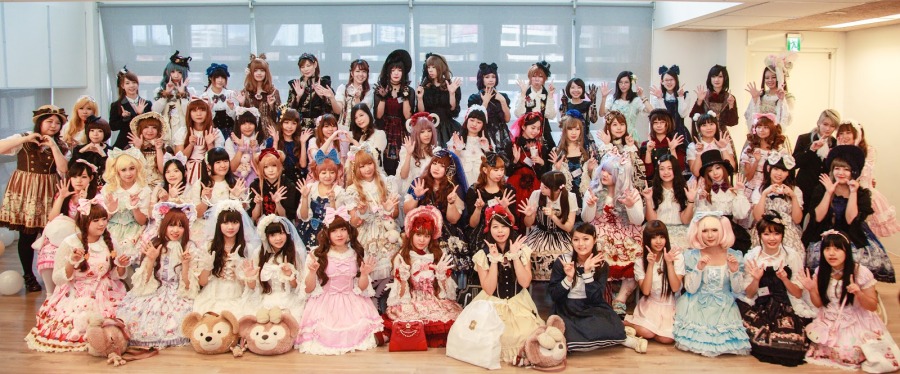
Lolita is another style that showed up in the 1990’s. Lolita is inspired by Victorian era fashions with modern twists brought in by other alternative fashions. Out of the fashion styles in this article, lolita fashion has some of the most strict rules and guidelines, such as dress length, coordinate components like dress, petticoats, hair accessories, etc, and the balance of colors and accessories in said coordinates. It has three main sub-styles:
![]() Gothic lolita is arguably the most recognizable lolita sub-style. Often characterized by dark colors and gothic motifs such as skulls and crosses, the original black and white gothic lolita was what became very popular when lolita first made its appearance in the alternative fashion scene. That original lolita style is now often called old-school and gothic lolita today is very different from the 90s.
Gothic lolita is arguably the most recognizable lolita sub-style. Often characterized by dark colors and gothic motifs such as skulls and crosses, the original black and white gothic lolita was what became very popular when lolita first made its appearance in the alternative fashion scene. That original lolita style is now often called old-school and gothic lolita today is very different from the 90s.
![]() Sweet lolita is currently the most popular, although it’s a bit on the decline since it’s peak in the mid-2010s. Sweet lolita often consists of extra fluffy skirts, cute motifs like foods, bears, and stars, as well as pastel colors. Over-the-top, or OTT Sweet, became popular in the 2010s and often had pastel wigs, excessive hair accessories and dresses with prints. Sweet now is much more toned down, favoring naturally colored hair and makeup as well as less over the top accessorization and prints.
Sweet lolita is currently the most popular, although it’s a bit on the decline since it’s peak in the mid-2010s. Sweet lolita often consists of extra fluffy skirts, cute motifs like foods, bears, and stars, as well as pastel colors. Over-the-top, or OTT Sweet, became popular in the 2010s and often had pastel wigs, excessive hair accessories and dresses with prints. Sweet now is much more toned down, favoring naturally colored hair and makeup as well as less over the top accessorization and prints.
![]() Classic lolita is much more toned down than the other two. It uses more muted colors like off-white and dusty pastels. Common motifs are florals and it often uses an A-line skirt as opposed to a “cupcake” or “bell” shape often favored by sweet lolita. This substyle has a more mature air than the other two but all three exemplify elegance.
Classic lolita is much more toned down than the other two. It uses more muted colors like off-white and dusty pastels. Common motifs are florals and it often uses an A-line skirt as opposed to a “cupcake” or “bell” shape often favored by sweet lolita. This substyle has a more mature air than the other two but all three exemplify elegance.
Fairy Kei
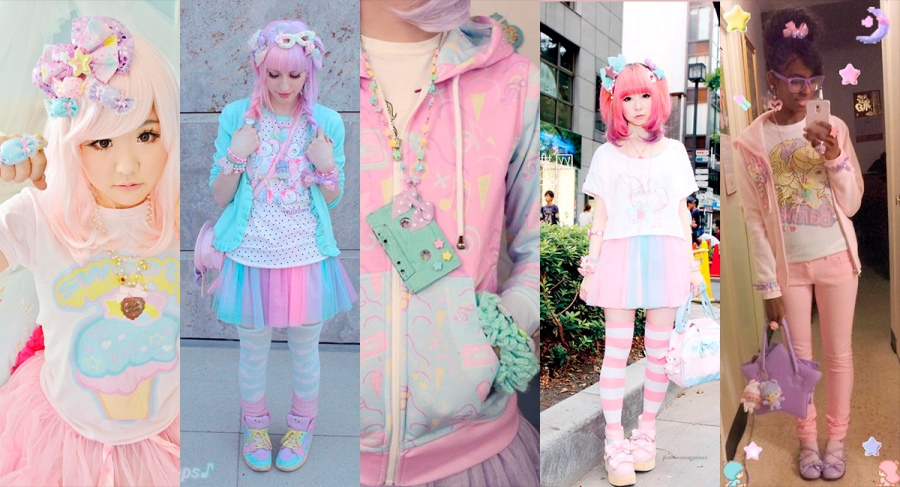
Like sweet lolita, fairy kei is characterized by cute themes and light colors. Common motifs are sweet foods, candies, hearts, stars and unicorns, as well as 80s characters like Rainbow Brite and the Care Bears. The color palette consists of neons and pastels and is often characterized by loose fitting clothes like sweaters, skirts and tutus.
Decora
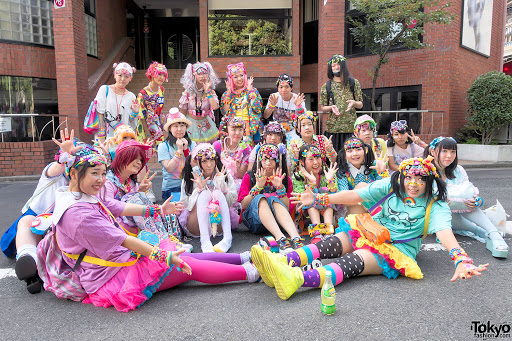
Decora is another cute fashion like fairy kei and sweet lolita. It has had a surge in popularity since the 2010s and often is paired with other fashions. The main characteristic of decora is the piles of brightly colored accessories that are worn. Decora wearers clip as many things into their hair as possible and pile on bracelets, rings and necklaces as well. There’s no such thing as “too much” when it comes to decora!
Final Thoughts
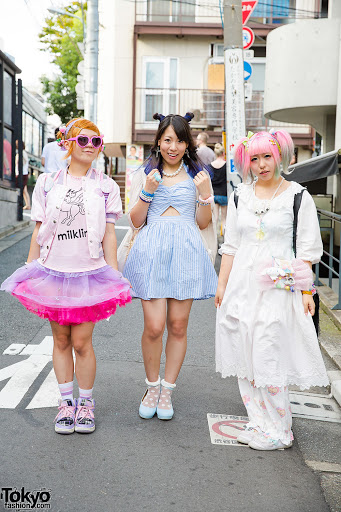
Harajuku fashions are constantly evolving and new ones are popping up all the time! Plus, there’s many more than just what I was able to talk about in this article. My advice is that if you’re interested in any of these fashions or one you’ve seen somewhere else, do your research and try it! The most important part is having fun and I hope you had fun learning about some of Japan’s most unique clothing styles.
Sources and Further Reading
littlemisswonderland.com/what-is-fairy-kei/
jpninfo.com/94276
lolita-handbook.livejournal.com/
travelettes.net/a-guide-to-harajuku-fashion/
mookychick.co.uk/indie-fashion/japanese/harajuku_girls.php
